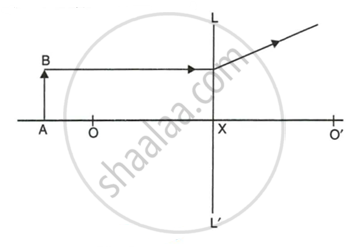Advertisements
Advertisements
प्रश्न
Do we expect any change in the position, nature, and size of the image
(i) formed by a concave lens,
(ii) with a change in the position of the object?
उत्तर
No, the image formed by a concave lens.
(i) Is always formed between the optical centre and the focus of the lens.
(ii) Is always virtual, erect and diminished in size. This is true for all positions of the object on the principal axis.
APPEARS IN
संबंधित प्रश्न
Where must the object be placed for the image formed by a converging lens to be:
real, inverted and smaller than the object?
If an object is placed 21 cm from a converging lens, the image formed is slightly smaller than the object. If the object is placed 19 cm from the lens, the image formed is slightly larger than object. The approximate focal length of the lens is ______.
Draw a diagram to show how a converging lens focusses parallel rays of light?
Take down this figure into your answer book and complete the path of the ray.
Name one of the common defects of vision and the type of lens used to remove it.
A person cannot see distant objects clearly. His vision can be corrected by using the spectacles containing:
(a) concave lenses
(b) plane lenses
(c) contact lenses
(d) convex lenses
Study the diagram below.

- Name the lens LL’.
- What are the points O and O' called ?
- Complete the diagram to form the image of the object AB.
- State three characteristics of the image.
An object is placed in front of a lens between its optical centre and focus. The formed image is virtual, erect, and diminished. Name the lens used.
Distinguish between Concave lens and Convex Lens.
Distinguish between:
Concave Lens and Convex Lens
